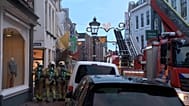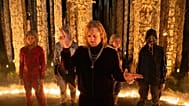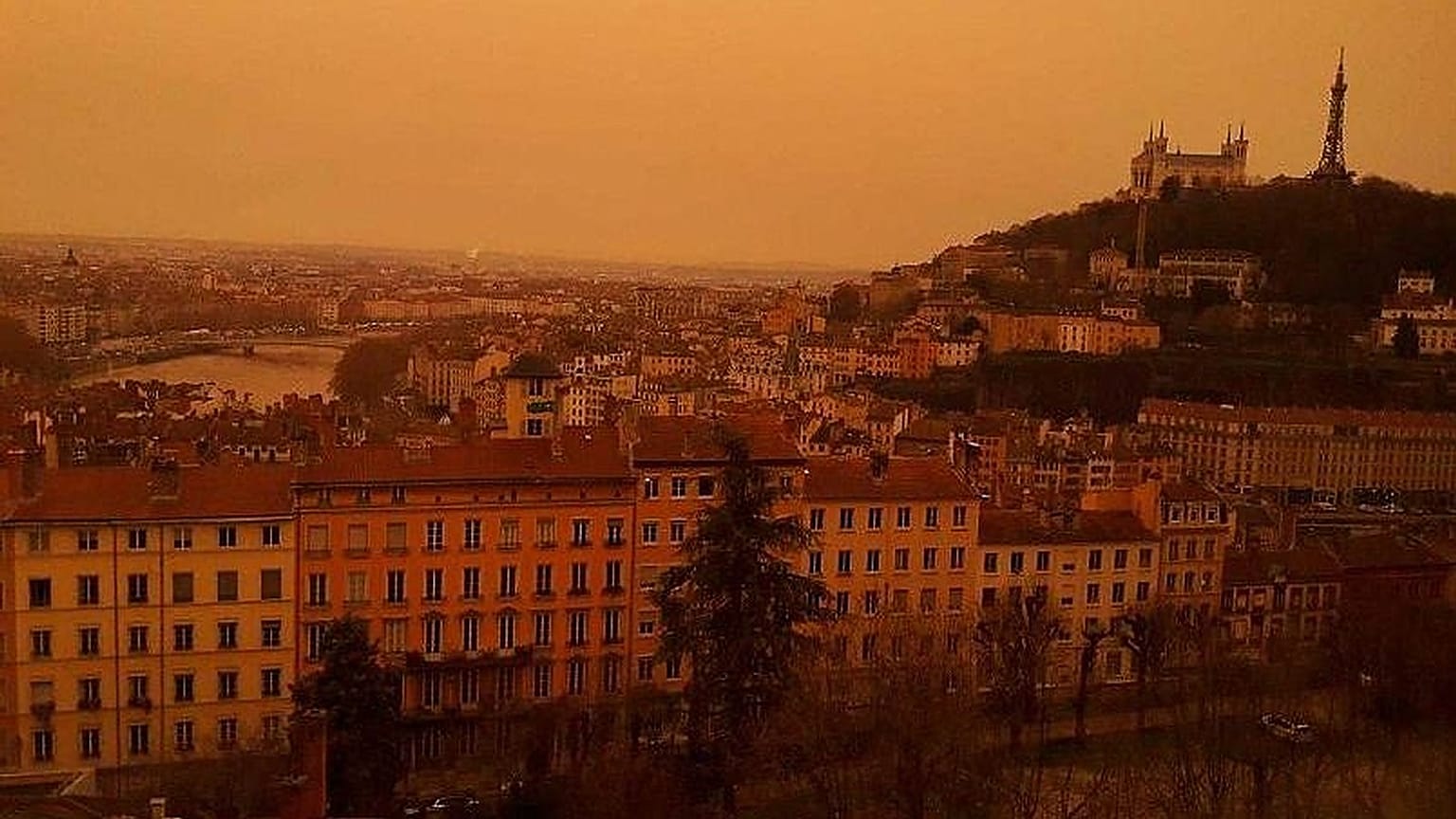Dust from the Sahara is being blown over to France, bringing with it radiation left over from French nuclear weapons tests from the 1960s.
Dust from the Sahara Desert blown north by strong seasonal winds to France did not only bring stunning light and sunsets - it also carried abnormal levels of radiation.
That's according to French NGO Acro (Association for Control of Radioactivity in the West), which monitors levels of radiation.
The radiation is not considered dangerous for human health but it did arrive in France with a big dollop of irony.
Acro said it comes from nuclear tests carried out by France in the Algerian desert at the beginning of the 1960s, when the North African country was a French overseas territory.
It claims a “boomerang” effect has brought back caesium-137, a product of nuclear fission created in nuclear explosions.
Acro said it did tests on recent Saharan dust that it collected in the area of Jura, near the French border with Switzerland.
“Considering homogeneous deposits in a wide area, based on this analytical result, Acro estimates there was 80,000 bq per km2 of caesium-137,” it said in a statement.
"This radioactive contamination, which comes from far away, 60 years after the nuclear explosions, reminds us of the perennial radioactive contamination in the Sahara, for which France is responsible,” it added.
Could radioactive desert dust be dangerous?
If anybody knows Saharan dust well in Europe, it’s scientists on the Canary Islands.
From a lab at the University of Laguna, in Tenerife, professor Pedro Salazar Carballo told Euronews: “The dust of the Saharan desert, or calima as it is called in the Canary Islands, sometimes contains potassium 40, naturally present in minerals and also caesium-137 from nuclear tests by the French government.”
His lab recently published a study about the levels of radiation present in the dust brought by the strong storms in 2020, which forced the closure of airports, keeping hundreds of tourists trapped.
At that time, it found high levels of potassium 40 and caesium-137.
Salazar Carballo insists these levels are safe, and the lab carries out constant monitoring of levels that are sent to the Nuclear Safety Council. It has never found alarming levels brought by storms - even having detected the Chernobyl and Fukushima incidents.
“What actually exposes us the most to radioactivity is the natural radon that emanates naturally from the soil itself,” explains Salazar Carballo.
“It is estimated that between 5% and 14% of lung cancers are due to the radon gas that we breathe, especially in underground and closed spaces.”
Western Europe is currently in the midst of another Saharan dust episode, and there have been at least three this season.
A fairly thick cloud is crossing the Mediterranean covering parts of Spain, France, the UK, and Germany among others, where the phenomenon of "mud rain" is now expected.
And as the storm affects the interior of Algeria again, it is likely that particles will carry back some caesium-137 from the site of the French nuclear test carried out on February 13, 1960.
Codenamed "Gerboise Bleue", that test and its remaining remnants, returning to France, could serve as a reminder of the persistent trace of atomic energy.















